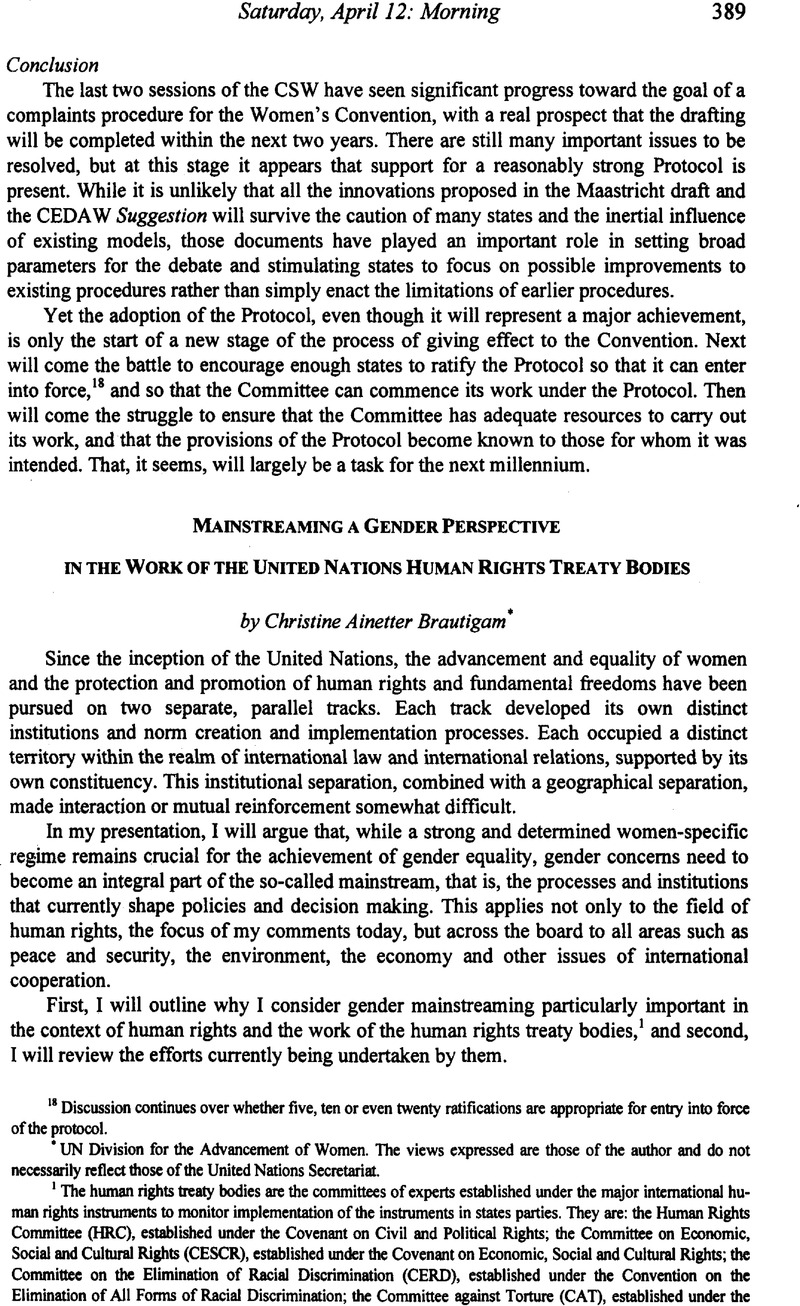No CrossRef data available.
Published online by Cambridge University Press: 28 February 2017

1 The human rights treaty bodies are the committees of experts established under the major international human rights instruments to monitor implementation of the instruments in states parties. They are: the Human Rights Committee (HRC), established under the Covenant on Civil and Political Rights; the Committee on Economic, Social and Cultural Rights (CESCR), established under the Covenant on Economic, Social and Cultural Rights; the Committee on the Elimination of Racial Discrimination (CERD), established under the Convention on the Elimination of All Forms of Racial Discrimination; the Committee against Torture (CAT), established under the Convention against Toiture and Other Cruel, Inhuman or Degrading Treatment or Punishment; the Committee on the Elimination of Discrimination against Women (CEDAW), established under the Convention on the Elimination of All Forms of Discrimination against Women; and the Committee on the Rights of the Child (CRC), established under the Convention on the Rights of the Child.
2 U.N. Doc. CERD/C/SR. 1166, para. 54. Michael Banton, Chairperson of CERD, emphasized this view in his statement at the Roundtable of human rights treaty bodies on human rights approaches to women’s health, held December 9-11, 1996 in Glen Cove, NY.
3 U.N. Doe. CCPR/C/79/Add.72, para. 15 (Nov. 11, 1996).
4 Report of the Human Rights Committee, paras. 195, 207, U.N. Doc. A/51/40 (1996).
5 General Comment 4, 13th Sess., U.N. Doc. HRI/GEN/l/Rev.2 (1981).
6 See, e.g., communication No. 35/1978, Aumeeruddy-Cziflra v. Mauritius, reprinted in 1 Selected Decisions of the Human Rights Committee under the Optional Protocol, U.N. Doc. CCPR/C/OP/1; Communications No. 172/1984, Broeks v. the Netherlands, and 182/1984, Zwaan-de Vries v. the Netherlands, reprinted in 2 Selected Decisions of the Human Rights Committee under the Optional Protocol, U.N. Doc. CCPR/C/OP/2; communication No. 202/1986, Avellanal v. Peru, U.N. Doc. A/44/40 (1989).